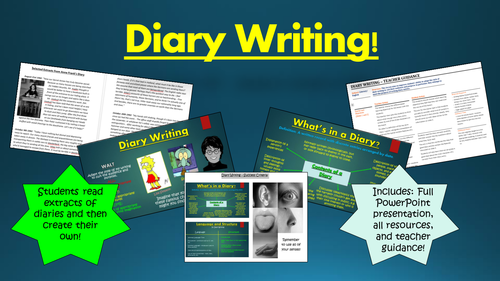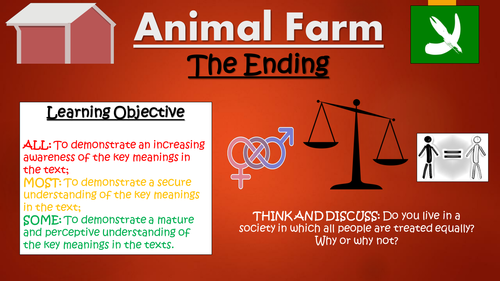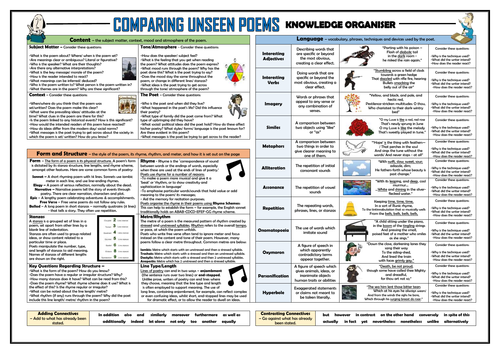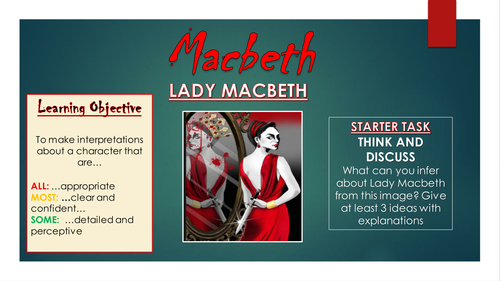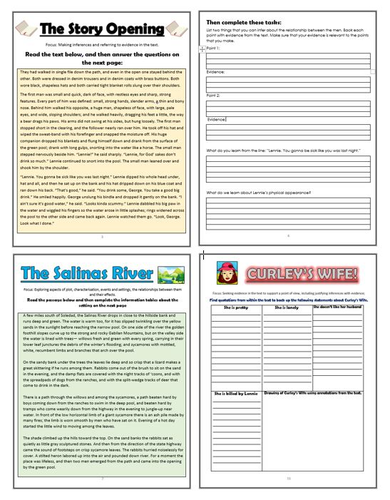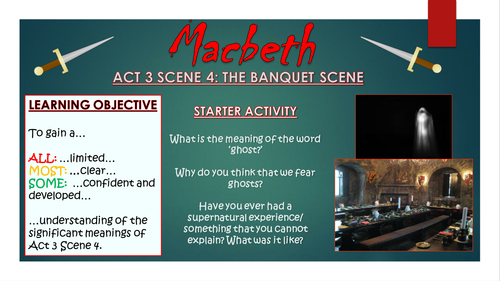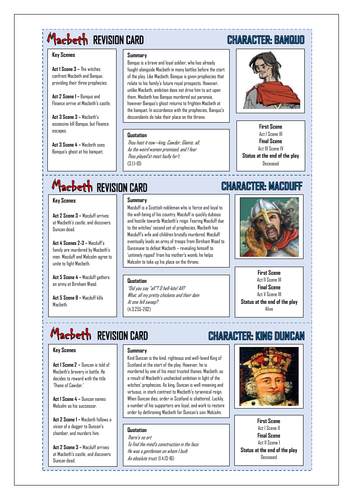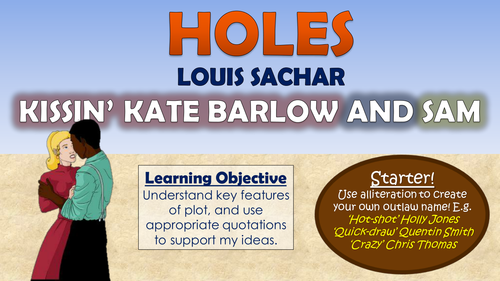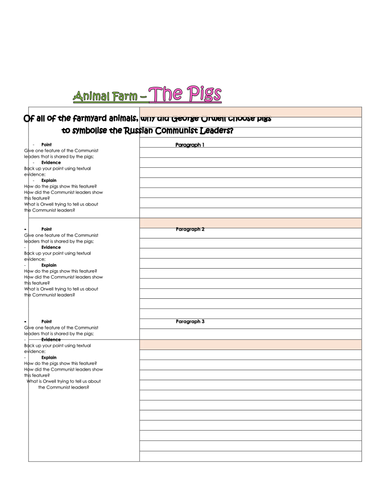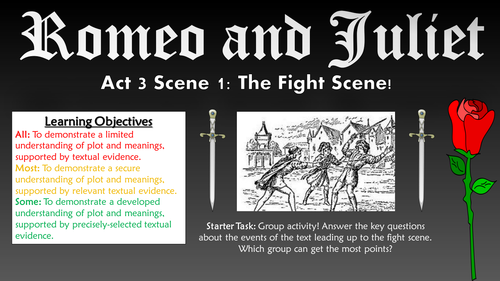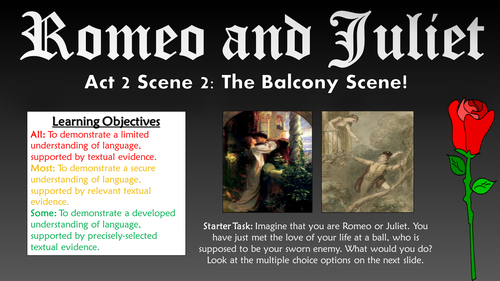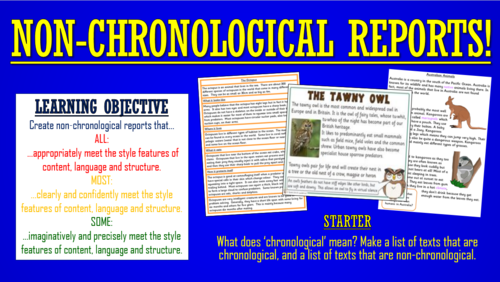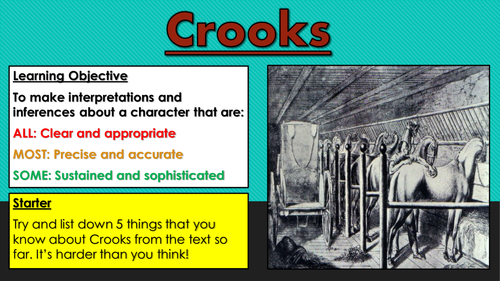
3k+Uploads
1969k+Views
2279k+Downloads
English

Diary Writing!
This stimulating and informative lesson aims to improve students’ ability to adapt the style of their writing to suit their audience and purpose. In particular, they attempt to meet the purpose of writing diary entries.
Students follow a clear and logical learning journey, in which they:
-Define diaries and their key content features;
-Read extracts of diaries, and explain which content features different writers employ;
-Work collaboratively to ascertain the language and structure features of diary entries;
-Create a success criteria for effective diary writing (although a ready-made success criteria is included)
-Write a diary entry for a famous character from their favourite movie, using the techniques that they have learnt;
-Peer/self-assess their diary writing attempts.
There are enough resources here really for two lessons, including:
-Visually engaging whole-lesson PowerPoint;
-Diary extracts x 4 (Adian Mole, Anne Frank, etc.)
-What's in a Diary Entry worksheet;
-Success Criteria;
-Step-by-step lesson plan.
All images are licensed for commercial use, and are cited on the final page of the slide.

Simple, Compound and Complex Sentences!
This detailed and engaging lesson enables students to gain an understanding of simple, compound and complex sentences, and to use a variation of sentence types in their own writing for clarity and effect.
Students learn through a number of fun and interactive tasks, which enable them to:
- Define and exemplify simple, compound, and complex sentences;
- Identify them in writing;
- Understand and analyse how different types of sentences can be used for clarity and effect;
- Create a written piece using a variety of sentence structures for clarity and effect;
- Evaluate their use of different sentence structures.
The resources include:
-Visually engaging and comprehensive whole-lesson presentation;
-Resources for the card-sorting activity;
-A model example and analysis worksheet;
-A success criteria;
-Step-by-step lesson plan.
All images are licensed for commercial use, and are cited on the final page of the slide.

Animal Farm: The Ending (Orwell's Message)
These resources enable students to understand and analyse the significance of the ending in George Orwell’s Animal Farm. More precisely, students learn to make clear and accurate interpretations regarding the increasing inequalities on the farm. Furthermore, students analyse how the final events of the novel help Orwell to get his message across to the reader. It is likely that there are enough resources here to be used over at least two hour-long lessons.
Students learn through the following tasks:
- Gauging and collaborating previous knowledge of 'equality' through a discussion-based starter task;
- Reading chapters 9 and 10 with a particular focus on the increasing inequalities between the different animals, and demonstrating their understanding through a related activity sheet;
- Gauging the inequalities between the animals through the design and explanation of an 'equality graph' (template and instructions provided);
- Understanding how the events of the final chapters help Orwell to get his message across to the reader;
- Analysing how the inequalities between the animals are evident through either a character analysis of Boxer or Napoleon (template and success criteria provided);
- Peer assessing their partners' learning attempts.
The following resources are provided:
- Engaging and colourful step-by-step PowerPoint
- Teacher lesson guidance/plan;
- Equality graph template;
- Two analysis template: Boxer and Napoleon;
- Chapters 9 and 10 worksheet (plus teacher answer sheet);
- Copies of Chapters 9 and 10.
All images and videos are licensed for commercial use, and are cited on the final slide of the PowerPoint.

Animal Farm Comprehension Activities Booklet!
This resource booklet contains a wide range of age-appropriate, engaging, and meaningful comprehension activities for use throughout the reading of George Orwell's 'Animal Farm.' Teachers have found them particularly useful in exam revision, comprehension tasks, or guided reading sessions. They are perfect for aiding the progress of students towards meeting the KS4 expectations within the new National Curriculum framework - this makes the tasks suitable for all examining bodies. Students have found these resources extremely engaging, and for teachers there is explicit information within each task regarding which comprehension strands the task is designed to demonstrate. They also relate to key extracts, characters, and themes from the story, ensuring that students gain a deep understanding of the text.
Activities within the booklet include:
- 'Context: The Russian Revolution' - to aid students with 'Drawing on knowledge of the purpose, audience and context of the writing, including its social, historical and cultural context and the literary tradition to which it belongs, to inform evaluation;'
- 'Orwell's Description' - to aid students with 'Analysing a writer’s choice of vocabulary, form, grammatical and structural features, and evaluating their effectiveness and impact;'
- 'Napoleon' - to aid students with 'Seeking evidence in the text to support a point of view, including justifying inferences with evidence;'
- 'Editing the Text' - to aid students with 'Making an informed personal response, recognising that other responses to a text are possible and evaluating these.'
Plus many, many more activities (the booklet is around 30 pages in length!) I've also added it as a PDF in case the formatting differs on your computer.
All images are licensed for commercial use, and are cited on a separate document (included).

Comparing Unseen Poetry Knowledge Organiser/ Revision Mat!
This detailed and visually-appealing resource offers a complete reference point for students preparing for the ‘Unseen Poetry’ elements of English Literature examinations. It is ideal for GCSE and A Level students, as it contains detailed and comprehensive sections (including explanations, examples and key questions) on:
Content -Subject Matter, Context, Tone, Atmosphere, The Poet;
Language - Similes, Metaphors, Interesting Adjectives, Interesting Verbs, Imagery, Onomatopoeia, Alliteration, Assonance, Personification, Hyperbole, Oxymoron, Repetition;
Form and Strcuture - Common Forms, Rhyme/ Rhyme Schemes, Metre, Rhythm, Stanzas, Line Type, Line Length.
Plus lists of Adding Connectives and Contrasting Connectives for use when comparing.
Key words and ideas are underlined for easy reference. The resource is designed to be printed onto A3, and is provided as both a PDF and a Word version (so that you can edit if you want to). All images used are licensed for commercial use and are cited on a separate document (included).

Macbeth: Lady Macbeth
This engaging and interesting lesson aims to improve students’ understanding of one of the key characters in William Shakespeare’s Macbeth: Lady Macbeth. In particular, they learn to make insightful interpretations about the character, and are enabled to draw links between Lady Macbeth and their knowledge of women in Shakespearean times.
The lesson utilises a range of tasks, that require students to be visual and interactive learners. It follows this learning journey:
- Inferring key information about the character of Lady Macbeth from picture clues;
- Identifying and ordering the key events in the text in which Lady Macbeth is involved;
- Understanding her role in the rise and downfall of Macbeth;
- Comparing and contrasting between her character and the expected role of women at the time the play was written;
- Analysing Shakespeare's development of Lady Macbeth as a key character throughout the text;
- Evaluating the learning in the lesson.
Included in this resource pack are:
- A well-presented, thorough, and informative, whole-lesson PowerPoint presentation;
- Resources for the sequencing activity, detailing Lady Macbeth's numerous actions throughout the play;
- A template to help scaffold the main task, complete with P.E.E instructions;
- A comprehensive teacher guidance form/lesson plan to assist delivery.
All images in this resource are licensed for commercial use, and are cited on the final slide of the lesson presentation.

Of Mice and Men Comprehension Activity Booklet!
This resource booklet contains a wide range of age-appropriate, engaging, and meaningful comprehension activities for use throughout the reading of John Steinbeck's 'Of Mice and Men.' Teachers have found them particularly useful in exam revision, comprehension tasks, or guided reading sessions. They are perfect for aiding the progress of students towards meeting the KS4 expectations within the new National Curriculum framework - this makes the tasks suitable for all examining bodies. Students have found these resources extremely engaging, and for teachers there is explicit information within each task regarding which comprehension strands the task is designed to demonstrate. They also relate to key extracts, characters, and themes from the story, ensuring that students gain a deep understanding of the text.
Activities within the booklet include:
- 'Context: The Great Depression' - to aid students with 'Drawing on knowledge of the purpose, audience and context of the writing, including its social, historical and cultural context and the literary tradition to which it belongs, to inform evaluation;'
- 'Steinbeck's Description' - to aid students with 'Analysing a writer’s choice of vocabulary, form, grammatical and structural features, and evaluating their effectiveness and impact;'
- 'Curley's Wife' - to aid students with 'Seeking evidence in the text to support a point of view, including justifying inferences with evidence;'
- 'Editing the Text' - to aid students with 'Making an informed personal response, recognising that other responses to a text are possible and evaluating these.'
Plus many, many more activities (the booklet is around 30 pages in length!) I've also added it as a PDF in case the formatting differs on your computer.
All images are licensed for commercial use, and are cited on a separate document (included).

Stone Cold - KS3 Comprehension Activities Booklet!
This resource booklet contains a wide range of age-appropriate, engaging, and meaningful comprehension activities for use throughout the reading of Robert Swindells' 'Stone Cold.' Teachers have found them particularly useful in comprehension or guided reading sessions. They are perfect for aiding the progress of children towards meeting the KS3 expectations within the new National Curriculum framework. Children have found these resources engaging, and for teachers there is explicit information within each task regarding which comprehension strands the task is designed to demonstrate. They also relate to key extracts, characters, and themes from the story, ensuring that children gain a deep understanding of the text.
Activities within the booklet include:
- 'Context: Homelessness in London' - to enable students to demonstrate that they can: 'Know the purpose, audience and context of the writing and drawing on this knowledge to support comprehension.'
- 'Swindell's Description' - to enable students to demonstrate that they can: 'Know how language, including figurative language, vocabulary choice, grammar, text structure and organisational features, present meaning.'
- 'Ginger' - to enable students to demonstrate that they can: 'Study setting, plot, and characterisation, and the effects of these.'
- 'Vocabulary Inspector' - to enable students to demonstrate that they can: 'Learn new vocabulary, relating it explicitly to known vocabulary and understanding it with the help of context and dictionaries.'
Plus many, many more activities (the booklet is 21 pages in length!) I've also added it as a PDF in case the formatting differs on your computer.
All images are licensed for commercial use, and are cited on a separate document (included).

Macbeth: Act 3 Scene 4 - The Ghost (Banquet) Scene!
This lesson aims to improve students’ understanding of one of the key scenes in William Shakespeare’s Macbeth – Act III Scene IV. In particular, they learn to make insightful interpretations about the changing nature of Macbeth’s tone throughout the scene, and are enabled to understand how this would have affected Shakespearean audiences.
The lesson utilises a range of tasks, that require students to be visual and interactive learners. It follows this learning journey:
- Defining the key term 'tone' and establishing its importance as a literary technique;
- Understanding how tone is used to depict mood and attitude across a range of fiction;
- Reading and interpreting Act 3 Scene 4, and establishing how Macbeth's tone alters throughout;
- Reflecting upon why this may/ what effect this may have had on audiences at the time;
- Summarising the events of the scene;
- Analysing Shakespeare's intentions in sharply altering Macbeth's tone throughout;
- Peer/self evaluating the learning in the lesson.
Included in this resource pack are:
- A well-presented, thorough, and informative, whole-lesson PowerPoint presentation;
- Resources for the reading and interpreting activity - full scene transcript with space for notes;
- A template to help scaffold the main task, complete with P.E.E instructions;
- Cards for the card sorting group activity
- A comprehensive teacher guidance form/lesson plan to assist delivery.
All images in this resource are licensed for commercial use, and are cited on the final slide of the lesson presentation.

Macbeth Revision Cards!
These colourful, comprehensive, and well-structured revision cards have been creatively designed for students securing their understanding of William Shakespeare’s tragedy ‘Macbeth.’ Each card is visually-appealing and highly-detailed, covering aspects of each feature including a full summary, cited quotations from the play, definitions/ examples, and a consideration of audience reactions. They are tried and tested, with teachers incorporating them in revision games, using them as essay writing aids, or utilising them as home revision aids. They are provided as both PDFs (to prevent formatting issues between computers) and as Word documents (for easy editing).
The revision cards included in this pack are:
Characters - Macbeth, Lady Macbeth, The Witches, Banquo, King Duncan, Macduff;
Context - William Shakespeare, James I and Divine Right, Witches and the Supernatural;
Devices - Dramatic Irony, Soliloquies and Asides, Dramatic Tension;
Scenes - Act 1 Scene 3 (Witches’ prophecies), Act 3 Scene 4 (Banquet/ Banquo’s ghost), Act 5 Scene 1 (Lady Macbeth sleepwalking);
Themes - Unchecked Ambition, Madness, Fate and the Supernatural.
For any questions or comments, please contact TandLGuru@yahoo.co.uk - Many thanks!

An Inspector Calls: Arthur Birling
This interesting and engaging lesson enables students to build their understanding Arthur Birling, one of the chief protagonists in J.B. Priestley’s ‘An Inspector Calls.’ In particular, students learn about his characteristics, his attitudes and opinions towards the world around him and other people, and also his relevance to Priestley’s social and historical context.
The lesson follows a clear, logical, bite-size learning journey, which guides students towards differentiated learning objectives. Over the course of this journey, they become able to:
- Recall and understand the key features of Birling's character profile;
- Link Birling to the social and historical context of the play;
- Understand how Birling's character is significant in terms of Priestley's key message;
- Read and understand the section of the play in which Birling is interviewed by the inspector;
- Analyse key quotations by and about Birling in the text;
- Read and understand the opening of the play;
- Create a diary-entry piece in which they consider Birling's morals and sense of responsibility for the death of Eva Smith;
-Peer/self-assess learning attempts.
This resource pack includes:
- A visually engaging whole-lesson PowerPoint presentation;
- Images of Birling to be annotated for the starter task;
- A clear and interesting worksheet for the introductory task;
- An extract from Act 1 of the play for students to read and interpret;
- P.E.E template for students to complete their character analysis;
- A detailed lesson plan, complete with what the teacher and students should aim to achieve at each stage of the lesson.
All images are licensed for commercial use, and are cited on the final slide of the PowerPoint.

Holes - Kissin' Kate Barlow and Sam!
This engaging and informative lesson helps students to understand the key events of the sub-plot in Louis Sachar’s 'Holes' - the story of Kissin’ Kate Barlow and Sam. Students demonstrate their comprehension of the key events in Kate and Sam’s life, before forming their own opinion on Kissin’ Kate’s justification for becoming an outlaw.
The lesson follows a step-by-step learning journey, in which children learn through:
- Reading and understanding the selected extracts to comprehend the key events of the sub-plot;
- Storyboarding the key events (using the template provided) to demonstrate their understanding of key quotes and ideas;
- Using textual evidence to show a deeper understanding of the sub-plot, considering the writer's ideas and the historical context;
- Forming their own viewpoint about Kissin' Kate's actions through a writing to argue piece;
- Peer assessing each other's learning attempts;
Included is:
- Whole lesson PowerPoint - colourful and comprehensive;
- Storyboard Template;
- Selected extracts - Chapters 23, 25, and 26;
- Analysis of the Sub-Plot worksheet (and student answer sheet);
- Comprehensive lesson plan.
There are also opportunities for group learning, speaking and listening, peer assessment, and whole class discussion. I originally used these resources with year 7 and 8 classes, however colleagues have used them for between years 4 and 9 with minimal adaptations.
All images are licensed for commercial use, and image rights are listed on the last page of the presentation.

Animal Farm: The Rise of the Pigs!
These resources enable students to understand and analyse the rise of the pigs towards power in chapters 3 and 4 of George Orwell’s Animal Farm. More precisely, students learn to make clear and accurate interpretations about the emergence of the various characters as leaders on the farm, with appropriate links to individual characters and their allegorical relationship to context.
Students learn through the following tasks:
- Gauging and collaborating prior knowledge through a discussion-based starter task;
- Reading chapters 3 and 4 and demonstrating their understanding through a related group quiz activity;
- Developing their understanding of the changing nature of characters, and their allegorical ties, through a quotation retrieval mind mapping task;
- Analysing the allegorical nature of the pigs, by further exploring their characteristics in relation to those of the communist Russian leaders of the early 20th century;
- Peer assessing their partners' learning attempts.
The following resources are provided:
- Engaging and colourful step-by-step PowerPoint
- Teacher lesson guidance/plan;
- Analytical paragraphs worksheet;
- Mind-mapping activity template;
- Copies of Chapters 3 and 4.
All images are licensed for commercial use, and are cited on the final slide of the PowerPoint.

Romeo and Juliet: Act 3 Scene 1 - The Fight Scene!
This interesting and engaging lesson enables students to gain a detailed understanding of the fight scene in William Shakespeare’s romantic tragedy Romeo and Juliet. Students learn to demonstrate a developed understanding of the plot and meanings throughout the scene, with the support of precisely-selected textual evidence. In particular, students consider Romeo's struggle between love and honour throughout the duration of the scene, and how social demands lead him towards his demise.
The lesson utilises a range of tasks, that require students to be attentive and interactive learners. It follows this learning journey:
- Establishing the events leading up to the fight, including a discussion regarding the characters and events that make a physical confrontation inevitable;
- Reading and interpreting Act III Scene I, interpreting and inferring the key meanings;
- Understanding the key themes throughout the scene, including Romeo's struggle between love and honour;
- More closely analysing the key meanings and developments within the scene;
- Peer/self evaluating the learning in the lesson.
Included in this resource pack are:
- A well-presented, thorough, and informative, whole-lesson PowerPoint presentation;
- Resources for the reading and interpreting activity - full scene transcript with space for notes;
- A closer analysis worksheet based upon Romeo's struggle;
- A template to help scaffold the main task, complete with P.E.E instructions;
- A challenging and thought-provoking worksheet, and an answer sheet for the teacher.
All images in this resource are licensed for commercial use, and are cited on the final slide of the lesson presentation.

Of Mice and Men Knowledge Organiser/ Revision Mat!
This detailed and visually-appealing resource offers a complete reference point for students learning or revising John Steinbeck's 'Of Mice and Men.' It contains comprehensive sections on:
- Context;
- Chapter by Chapter Summary (with quotes);
- Main Characters;
- Themes;
- Literary Features;
- The Origins of the Book Title.
Key words and ideas are underlined for easy reference. The resource is designed to be printed onto A3, and is provided as both a PDF and a Word version (so that you can edit if you want to). All images used are licensed for commercial use and are cited on a separate document (included).

Romeo and Juliet: Act 2 Scene 2 - The Balcony Scene!
This lesson enables students to gain a detailed understanding of the balcony scene in William Shakespeare’s romantic tragedy Romeo and Juliet. Students learn to demonstrate a developed understanding of language, supported by precisely-selected textual evidence. Students develop clear interpretations of the key meanings within the scene, as the lesson provides a close analysis of the figurative language, rhyme, and repetition strategies utilised by Shakespeare throughout.
The lesson utilises a range of tasks, that require students to be attentive and interactive learners. It follows this learning journey:
- Establishing the events leading up to the scene, and the predicament that Romeo and Juliet are in;
- Reading and interpreting Act II Scene II, interpreting and inferring the key meanings;
- Understanding the key themes throughout the scene, including Juliet's comparison with sunlight;
- More closely analysing Shakespeare's use of language in Juliet's 'What's in a name?' speech;
- Peer/self evaluating the learning in the lesson.
Included in this resource pack are:
- A well-presented, thorough, and informative, whole-lesson PowerPoint presentation;
- Resources for the reading and interpreting activity - full scene transcript with space for notes;
- A template to help scaffold the main task, complete with P.E.E instructions;
- A challenging and thought-provoking worksheet, and an answer sheet for the teacher.
All images in this resource are licensed for commercial use, and are cited on the final slide of the lesson presentation.

Non-Chronological Reports!
This stimulating and informative lesson develops students’ skill in creating non-chronological reports that precisely meet the content, language and structural features of the form. In particular, they gain an in-depth understanding of how non-chronological reports are ordinarily set out on the page, what information should be included within them, and what style they should be written in, in order to meet form and purpose. These resources contain 3 example non-chronological reports, differentiated by the accessibility of their language.
Students follow a clear and logical learning journey, in which they:
-Define what non-chronological letters are and clarify their purpose;
Establish the structural features of non-chronological letters;
-Work collaboratively to identify and analyse the content and language features in further model examples of non-chronological reports;
-Create a success criteria for effective non-chronological reports;
-Write their own non-chronological reports, using a planning sheet (if needed) and the techniques that they have learnt;
-Peer/self-assess their writing attempts.
There are enough resources here really for two lessons, including:
-Visually engaging whole-lesson PowerPoint;
-Non-chronological reports x 3 (based on tennis, great white sharks, and Dubai)
-Non-chronological reports structure worksheet;
-Non chronological reports planning sheet;
-Step-by-step lesson plan.
All images are licensed for commercial use, and are cited on the final page of the slide.

Comparing Poems!
This lesson aims to improve students’ skills in comparing and contrasting poems. Students learn how to understand the different ways that poetry can be compared, plan a well-structured comparative essay, and complete a detailed, organised, and sustained comparison. This lesson is most suitable for children preparing to sit GCSEs/ A Levels. Please note, the lesson should be used subsequent to students being taught poems, as I have left the poems to be compared up to the teacher, as opposed to specifying particular poems.
The lesson follows a step-by-step learning journey, in which children learn through:
- Understanding what features of poems can be compared (a comprehensive list is provided and utilised in the lesson);
- Comprehending how to structure comparative essays as a whole (using a specific formula, which has always formed a successful model for my previous students);
- Reading and analysing a model example of a comparative paragraph, in order to understand the key features within each paragraph of a comparative essay;
- Writing their own poetry comparison, using planning and success criteria that are formed over the lesson;
- Peer assessing each other's learning attempts.
Included is:
- Whole lesson PowerPoint - colourful and substantial;
- Worksheets and resources for all activities;
- A model example;
- Comprehensive lesson plan.
There are also opportunities for group learning, peer assessment, and whole class discussion. This was originally taught to mixed-ability year 10 groups, but can be differentiated for groups of different ages and abilities.
All images are licensed for commercial use, and image rights are listed on the last page of the presentation.

Of Mice and Men - The Themes of Dreams and Loneliness
This engaging and interesting lesson aims to improve students' knowledge of the main themes (Dreams and Loneliness) in John Steinbeck's Of Mice and Men. It also aims to build their skills in retrieving information from texts, understanding the writer's ideas and opinions, and making precise and confident interpretations about texts.
The lesson uses a range of tasks, that require students to use their visual and interactive skills. It follows this learning journey:
- Understanding what dreams and loneliness are, and how we each experience them;
- Defining themes and understanding how writers use them;
- Understanding how and why themes are used in other famous texts;
- Retrieving evidence from the text to demonstrate where the characters experience dreams and loneliness;
- Analysing how the themes are used to help get across John Steinbeck's ideas about 1930s America;
- Evaluating each others' analytical attempts.
The resource includes a comprehensive and visually engaging PowerPoint presentation, a worksheet for recording the retrieved quotations, a helpful template for the main task, and a lesson plan/ teacher guidance sheet.
All images in this resource are licensed for commercial use, and are cited on the final slide of the lesson presentation.
You can choose to buy this resource alone, or as part of the 'Of Mice and Men - All Lessons and Scheme' bundle, which contains seven full lessons, resources, teachers notes, and PowerPoint presentations, plus a Pointless Of Mice and Men game, for just £5!

Of Mice and Men: Characterisation of Crooks
This engaging and informative lesson aims to improve students' knowledge and understanding of the character of Crooks in Steinbeck's Of Mice and Men: His dreams, his loneliness, and how his plight is a product of living in 1930s America. The lesson also aims to improve students' analytical skills, so that they can demonstrate sustained and sophisticated interpretations of the character.
This pack includes the full lesson presentation, with tasks and key information, an extract from the text with close reading questions, a writing to analyse help-sheet, and full teacher guidance. The learning journey is clear and progressive, following a pathway of increasingly more difficult tasks, including:
- An opening task to ascertain what is known about Crooks, and racism in 1930s America
- An extract from the text that highlights some of his characteristics and his loneliness.
- Questions to encourage students to infer and deduce hidden meanings, and understand Steinbeck's message,
- Joint creation of an analysis success criteria;
- An opportunity to answer an exam style question based upon the character of Crooks;
- A chance to peer assess against the success criteria.
All images are licensed for commercial use, and are cited on the final slide of the presentation.
You can choose to buy this resource alone, or as part of the 'Of Mice and Men - All Lessons and Scheme' bundle, which contains seven full lessons, resources, teachers notes, and PowerPoint presentations, plus a Pointless Of Mice and Men game, for just £5!

